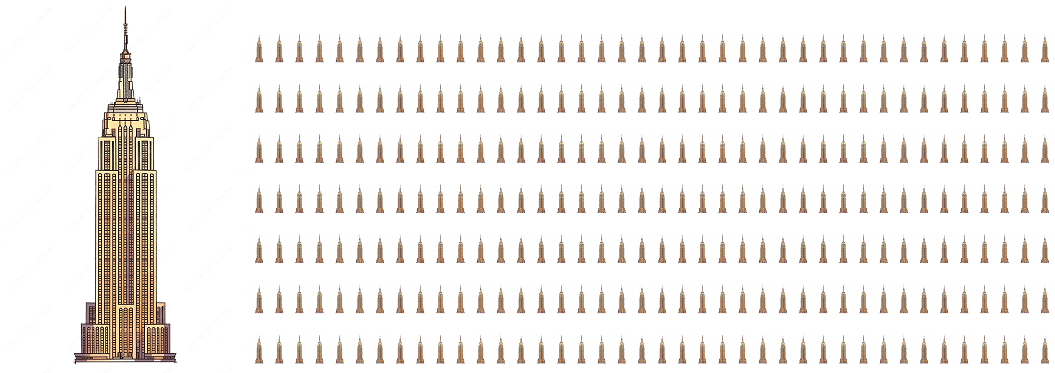
Collaborators
2 Designers | 3 Engineers
What is FabricFeed all about?
Over 2.5 million tons of textile waste are recycled in the U.S. annually, fueling a growing market projected to reach $2.5 billion by 2030.
Yet, textile waste collectors face challenges finding recycling partners and rely on slow, manual transactions involving scattered emails, photos, and invoices.
My Responsibilities
As Design Lead, I interviewed stakeholders from WM and LACI, ran competitive analyses, and benchmarked baseline behaviors to uncover pain points in textile waste exchange.
I synthesized these insights and led a team of two junior designers and three engineers in designing and launching a functional MVP to drive initial engagement.

The total floor area of the Empire State Building is approximately 2,700,000 sq ft.
(Click images to expand)
Brand Identity & Voice
I defined FabricFeed’s brand voice to reflect clarity, sustainability, and innovation. Our messaging focuses on simplifying textile waste transactions while promoting responsible, user-centered design.
Visual System & Design Foundation
I built a cohesive design system, including brand guidelines, a nature-inspired color palette, logo rules, and intuitive typography. Components like buttons, icons, and navigation were crafted to ensure consistency and usability across the platform.
User Flows & Experience Mapping
I created user flows and journeys to align the team with real user needs. These mapped how recyclers and collectors discover, connect, and transact — forming the backbone of a seamless, purpose-driven platform.
Simple Recycling
Partner Discoverability
A Robust Networking Hub
Easy Inventory Management
When creating the wireframes for this marketplace, we reviewed multiple ways of presenting vital information for promoting textile waste partnerships in a concise, digestible way based on our initial interviews with potential users. Here are a few of our iterations below!
Knowing that professionals in the textile waste industry mainly corresponded with each other through email, we wanted to centralize their methods of connecting, storing conversations, and exchanging important documents. Here are a couple of are iterations below!
In order to further support textile waste professionals, we started to brainstorm how they could use our platform as an all-in-one product. On top of our collaboration efforts, we wanted to present added value for internal operations.

Collaborating closely with our advisory board and engaging potential users, this phase is a strategic restart of the design process. Through user and stakeholder interviews, we are not only seeking valuable insights but laying the groundwork for the next phase of FabricFeed's design evolution.


In closing, FabricFeed's evolution has been deeply influenced by invaluable feedback from users and stakeholders. Our commitment to integrating this feedback is evident in the organized Confluence board, showcasing insights from usability tests. Moving beyond the scope of FabricFeed's MVP, we prioritize continuous refinement, ensuring alignment with user needs and stakeholder goals. This user-centric approach not only enhances the experience but also fosters engagement. As we evolve, feedback remains central, ensuring FabricFeed's relevance and resonance.
